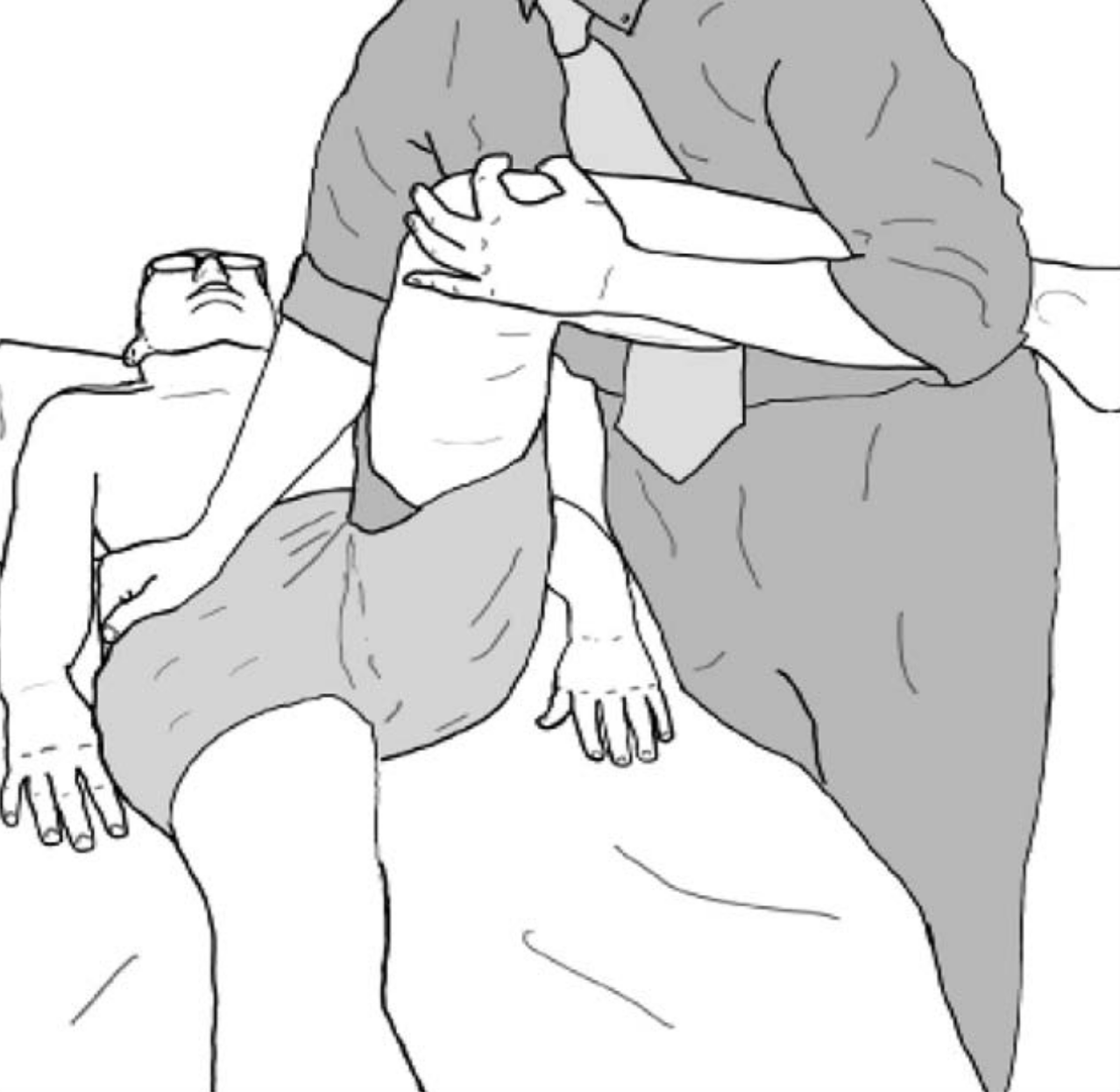Internal Rotation Over Pressure Test (IROP)
Hip provocation maneuver
Technique
“Internal rotation over pressure was performed with the subject supine. The affected hip is flexed 90° and the knee flexed 90°. The examiner internally rotates the hip by rotating the leg laterally while stabilizing the knee at the same time. The examiner’s other hand is used to apply gentle downward pressure on the contralateral anterior superior iliac spine. The examiner applies gentle pressure to the tested leg in the lateral direction. The test is positive if it recreates the patient’s hip pain.”1
“IROP testing was also performed with the subject supine. The affected hip was flexed to 90° and the knee flexed to 90°. The examiner internally rotated the hip by rotating the leg laterally while stabilizing the knee at the same time. Internal rotation overpressure was administered with further gentle rotation of the ipsilateral leg. The pelvis was stabilized, when necessary, by the examiner’s other hand at the contralateral anterior superior iliac spine to reduce contralateral ilial rotation (Figure 4). The test was positive if it recreated the patient’s hip pain.”1
- Patient is in supine2
- The affected leg is passively moved into flexion and IR with approximation (axial compression)2
- Performing IROP at maximal hip flexion can potentially increase sensitivity for detecting FAI1.
- Performing IROP at hip neutral (0° hip flexion/extension) is a potentially more specific variation since it can eliminate confounding soft-tissue sources of pain1.
- This position for IROP could also be called the “log roll test”1
Grading
IROP is considered positive if pain is reproduced2.
Interpretation
The IROP can be used to rule in either FAI or acetabular labral pathology2
Validity
“Sensitivity of this maneuver has been reported to be 75–89% [25,26]. Maslowski et al. compared IROP, Scour test, FABER, and Stinchfield tests, and they found IROP to have the highest positive predictive value for intraarticular hip pathology”2
